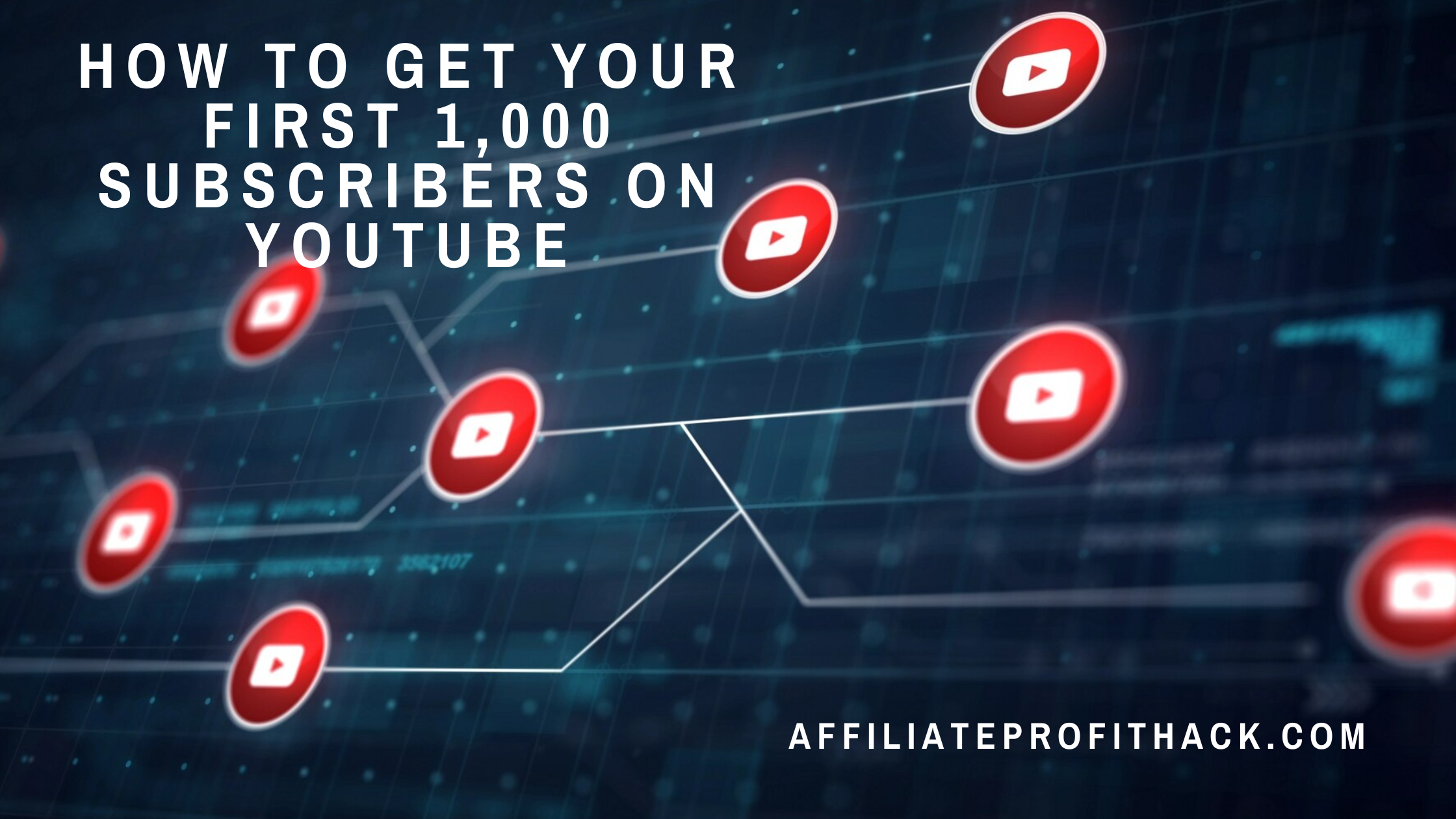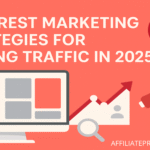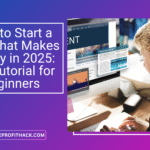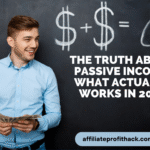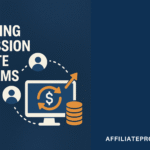Welcome to my article “How to Get Your First 1,000 Subscribers on YouTube”.
You have decided to start a YouTube channel—congratulations! You are now part of the crazy but exciting world of content creation, where one viral video can turn you into an overnight sensation… or, more realistically, where you spend hours editing a video that gets exactly 12 views (and one of them is your mom). But don’t worry, we’ve all been there! The real challenge? Getting your first 1,000 subscribers—because let’s be honest, growing from 0 feels like pushing a boulder uphill with a toothpick.
Here’s the good news: You don’t need to be famous, rich, or have Hollywood-level editing skills to hit 1,000 subs. What you do need is a solid strategy—and that’s exactly what this guide will give you. From optimizing your channel to creating binge-worthy content, mastering YouTube SEO, and leveraging social media, we’re covering everything you need to go from invisible to unstoppable. So, grab a coffee (or energy drink, depending on your editing schedule), and let’s dive into the proven steps to growing your YouTube audience—without losing your sanity.
My Best Recommended & Proven Way to Make $100-$300 Daily – Watch This FREE Video to START >>>
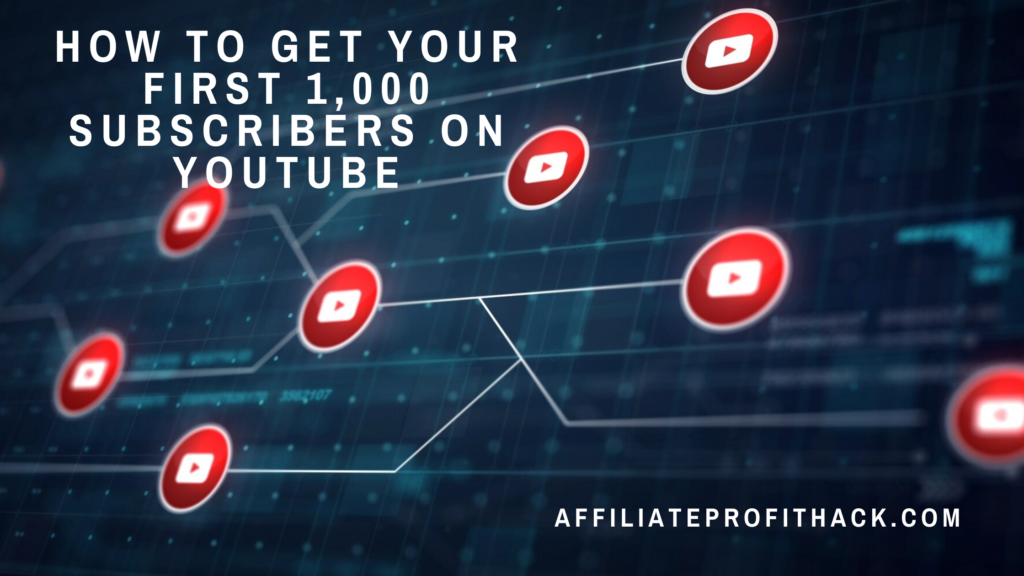
Optimize Your YouTube Channel for Growth
Before you start worrying about viral videos or fancy editing tricks, let’s talk about your channel itself. Think of it as your online storefront—if it looks messy, unclear, or just plain uninviting, people won’t stick around, let alone hit the subscribe button. You need to make a strong first impression so that when someone stumbles upon your channel, they immediately know what you’re about and why they should subscribe.
1. Pick a Clear Niche and Stick to It
If your channel is all over the place—one day you’re reviewing tech gadgets, the next day you’re vlogging about your dog’s haircut—people won’t know what to expect. And when people don’t know what to expect, they don’t subscribe. Choose a specific niche (gaming, personal finance, fitness, productivity—whatever you’re passionate about) and create content around that. This helps YouTube understand your channel and recommend it to the right audience.
2. Create an Eye-Catching Channel Banner and Logo
Your channel banner is like your YouTube handshake—it’s the first thing people see when they land on your page. It should be clean, professional, and clearly communicate what your channel is about. If your banner still says “Made with Canva Free Plan,” it’s time for an upgrade. As for your logo, keep it simple but recognizable—your face works great if you’re a personal brand, or use a well-designed graphic if your channel is more business-oriented.
3. Write an SEO-Optimized Channel Description
Your channel description is not just a place to say, “Hey, I make cool videos.” It’s an opportunity to tell people why they should subscribe and help YouTube understand your content. Use relevant keywords naturally, describe what kind of videos you create, and include a call to action like “Subscribe for weekly tips on XYZ” so people know what’s in it for them.
4. Organize Your Homepage for Maximum Engagement
When a potential subscriber visits your channel, don’t make them dig through random uploads to figure out what’s worth watching. Use playlists to group similar videos together, set a strong channel trailer that introduces your content, and highlight your best-performing videos to hook new viewers immediately. Think of it as curating a Netflix-style experience for your audience—make it easy for them to binge your content.
A well-optimized channel doesn’t just look good; it makes it easier for new visitors to subscribe and YouTube to recommend your content. And when you’re trying to hit that first 1,000-subscriber milestone, every little detail counts.
Create High-Quality, Engaging Content
Now that your channel is looking sharp, it’s time to tackle the real reason people subscribe—your content. You can have the best channel banner, the catchiest name, and a killer description, but if your videos are boring, nobody’s sticking around. The internet is full of distractions, and your job is to make content that grabs attention, keeps viewers watching, and makes them want more.
1. Research Topics That People Actually Want to Watch
Creating YouTube videos without researching what your audience wants is like throwing darts in the dark and hoping you hit the bullseye. Instead of guessing, use YouTube Search, Google Trends, and even the “People also ask” section on Google to find topics that people are already searching for. The key is to answer questions, solve problems, or entertain in a way that keeps viewers coming back.
A simple trick? Type a keyword related to your niche into YouTube’s search bar and see what autocomplete suggests. Those are real searches from real people—give them the content they’re looking for.
2. Make Every Second Count—Hook Viewers Instantly
Attention spans are shorter than ever, and if you don’t hook viewers in the first few seconds, they’re gone. Your introduction should immediately tell people what the video is about and why they should keep watching. Skip the long-winded intros and get straight to the point—nobody wants to sit through a 2-minute monologue before the actual content starts.
One of the best ways to keep viewers engaged is by using the pattern interrupt technique—changing camera angles, adding visuals, or using text pop-ups to break up monotony. Keep things moving, and your audience will stay with you longer.
My Best Recommended & Proven Way to Make $100-$300 Daily – Watch This FREE Video to START >>>
3. Script (or At Least Outline) Your Videos for Better Flow
Some people think scripting makes videos sound robotic, but the truth is, winging it often leads to rambling and messy editing. Even if you don’t want to script every word, having a clear outline helps keep your video focused and engaging. Break it down into sections, highlight key points, and practice your delivery. Viewers appreciate content that’s well-structured and easy to follow.
4. Edit Like a Pro (Even If You’re Not One)
Editing is where the magic happens. A well-edited video can turn a decent idea into an engaging masterpiece. Cut out unnecessary pauses, add music to enhance the mood, and use captions to make your videos more accessible.
If you’re a beginner, free tools like DaVinci Resolve, iMovie, or CapCut can get the job done. But remember—editing should enhance the content, not distract from it. Keep it clean, smooth, and aligned with your brand’s style.
5. Thumbnails and Titles: The Click-Winning Formula
You can create the best video on YouTube, but if your thumbnail and title don’t stand out, nobody will click on it. Your title should spark curiosity while clearly telling viewers what to expect. And your thumbnail? It needs to be bright, bold, and visually compelling. Avoid clutter, use high-contrast text, and make sure it looks good even on a small screen.
Remember, high-quality, engaging content isn’t just about fancy production—it’s about providing value, keeping viewers entertained, and making them want to hit that subscribe button. If you can do that consistently, hitting your first 1,000 subscribers will just be the beginning.
Master YouTube SEO for More Visibility
Creating great content is only half the battle—if nobody can find your videos, all that effort goes to waste. That’s where YouTube SEO (Search Engine Optimization) comes in. YouTube is the second-largest search engine in the world (right after Google), and if you play your SEO cards right, your videos can rank higher in search results, get recommended more often, and bring in a steady stream of new subscribers.
1. Find the Right Keywords Before You Hit Record
Imagine you just made an amazing video on a topic you love, but… nobody is searching for it. That’s a problem. Before you start recording, you need to find keywords that people are actually searching for so your video has a chance to show up in search results.
How do you do that?
- YouTube Search Autocomplete: Start typing a topic in the search bar and see what suggestions pop up. Those are real searches.
- TubeBuddy or VidIQ: These tools show keyword volume, competition level, and related search terms.
- Google Trends: Helps you compare search trends over time so you know what’s hot and what’s not.
Once you have a keyword, make sure it appears naturally in your video title, description, and tags.
2. Craft Click-Worthy Titles Without Clickbait
Your video title is the first thing people see, and it plays a huge role in whether they click or scroll past. It should be clear, engaging, and keyword-rich.
A good format to follow:
✅ “How to [Do Something] in [Timeframe] – [Bonus or Unique Hook]”
✅ “[X Mistakes to Avoid] When [Doing Something]”
✅ “[The Ultimate Guide to] [Topic]”
For example:
- Bad title: “My YouTube Journey” (Nobody is searching for this.)
- Better title: “How I Got My First 1,000 YouTube Subscribers in 30 Days” (Includes keywords and a clear hook.)
Avoid clickbait—it might get clicks, but if people leave quickly, YouTube will stop recommending your video.
3. Optimize Your Video Description the Right Way
Many creators treat the video description like an afterthought. Big mistake. YouTube scans descriptions for keywords, so a well-optimized description can boost your ranking.
A good description should include:
- Your main keyword in the first two sentences
- A quick summary of the video (naturally including related keywords)
- Timestamps to improve user experience
- Links to related videos or playlists (to keep people on your channel)
- A call to action (subscribe, like, comment)
Example structure:
“Want to grow your YouTube channel fast? In this video, I’ll show you how to get your first 1,000 subscribers using simple strategies that work. Whether you’re a beginner or struggling to grow, these YouTube SEO tips will help!”
4. Tags and Hashtags: Do They Still Matter?
Tags aren’t as important as they used to be, but they still help YouTube understand your content. Use a mix of:
- Main keyword (e.g., “how to get 1000 subscribers on YouTube”)
- Related terms (e.g., “YouTube growth tips, YouTube subscriber hack”)
- Broad terms (e.g., “YouTube marketing, content creation”)
Hashtags, on the other hand, can increase discoverability. Add 2-3 relevant ones in your description, like #YouTubeGrowth #ContentCreation.
5. Get More Watch Time with Captions & Timestamps
YouTube rewards videos that keep people watching longer. One trick? Add closed captions—they help with accessibility and improve SEO because YouTube reads them for context.
Timestamps (aka video chapters) help viewers navigate your content and improve engagement. A well-structured video with timestamps looks professional and keeps people watching longer—which means better rankings.
6. Thumbnails & CTR: The Secret to Getting Clicked
SEO gets your video seen, but a good thumbnail gets it clicked. YouTube tracks Click-Through Rate (CTR), and if your thumbnail and title don’t attract clicks, your ranking drops.
Tips for a great thumbnail:
- Bright colors and high contrast (so it stands out)
- Big, readable text (but don’t overcrowd it)
- Emotion or curiosity (something that makes people stop and click)
Compare your CTR in YouTube Analytics—if it’s low, test different thumbnails to see what works best.
Leverage Social Media & Collaboration for Growth
If you are just relying on YouTube’s algorithm to do all the work, you’re leaving a huge opportunity on the table. The fastest-growing YouTube channels don’t just sit back and wait for views to roll in—they actively promote their videos and collaborate with other creators to expand their audience. If you want to hit 1,000 subscribers faster, it’s time to step outside the YouTube bubble and use social media and collaborations to your advantage.
1. Share Your Videos Everywhere (But the Right Way)
Posting your video once and calling it a day? That’s not how you grow. You need to actively share and promote your content across multiple platforms to get more eyeballs on your channel.
Here’s how to do it effectively:
- Facebook Groups: Find groups related to your niche and share your videos only where it adds value (not as spam). Answer questions and drop a link when relevant.
- Instagram & Stories: Tease new videos with short clips, behind-the-scenes footage, or polls to engage your audience.
- Twitter/X: Post attention-grabbing tweets with a hook and link to your video. Pin your latest video to your profile.
- Reddit & Quora: Answer niche-related questions with helpful insights and include your video if it’s truly relevant.
- LinkedIn: If your content is educational or business-related, LinkedIn can be a goldmine. Write short posts that summarize key takeaways from your video and link to it.
Just remember: Nobody likes spam. Focus on engagement first, promotion second.
2. Repurpose Your Content for More Reach
Why post your content only once when you can repurpose it into multiple formats for different platforms?
- Turn short clips from your videos into YouTube Shorts, Instagram Reels, and TikToks
- Convert key takeaways into carousel posts for Instagram and LinkedIn
- Create a blog post based on your video script and publish it on Medium or your website
- Record a Twitter/X thread breaking down the main points from your video
- Design Pinterest graphics with links to your videos (yes, Pinterest drives traffic too!)
The more places your content appears, the more chances people have to discover your channel.
My Best Recommended & Proven Way to Make $100-$300 Daily – Watch This FREE Video to START >>>
3. Collaborate with Other YouTubers
Collaboration is one of the fastest ways to grow on YouTube. When you team up with another creator, you get exposure to their audience—which means instant credibility and new subscribers.
How to find good collaboration opportunities:
- Look for creators in your niche with a similar audience size
- Reach out with a genuine pitch (not just “Hey, let’s collab”)
- Offer a clear benefit—what’s in it for them?
- Suggest a fun, valuable idea (e.g., a challenge, interview, or reaction video)
Even if you’re a small channel, you can still add value by offering unique insights, helping with editing, or cross-promoting content.
4. Get Featured on Podcasts & Blogs
Podcasts and blogs always need fresh guests and content. If you’re knowledgeable about your niche, pitch yourself as a guest on relevant podcasts. Many podcasts have YouTube channels, so this can be a huge credibility boost and bring in new subscribers.
Similarly, guest posting on blogs or websites in your niche can drive traffic to your YouTube channel. Offer a valuable article with a link to your channel—you get exposure, and they get great content.
5. Build an Email List to Stay Connected
Social media platforms change algorithms all the time, but email stays consistent. By building an email list, you have a direct way to reach your audience and let them know about new videos.
Simple ways to grow an email list:
- Offer a free guide, checklist, or exclusive content in exchange for an email sign-up
- Create a newsletter with YouTube updates, behind-the-scenes stories, or extra tips
- Include an email sign-up link in your video descriptions and about section
Email lists might sound old-school, but they work—especially when you’re trying to build a loyal, engaged audience beyond just YouTube.
Stay Consistent & Analyze Your Growth
If there’s one thing that separates successful YouTubers from those who give up too soon, it’s consistency. You can have great content, perfect SEO, and even some viral hits, but if you’re not showing up regularly, your channel’s growth will stall. Think of YouTube like the gym—you won’t see results overnight, but if you stick to the process, you’ll eventually see big gains.
1. Set a Realistic Upload Schedule & Stick to It
One of the biggest mistakes new YouTubers make? Posting randomly and expecting steady growth. The YouTube algorithm (and your audience) loves consistency.
You don’t have to post daily, but you do need a predictable schedule. Whether it’s once a week, twice a month, or even every few days, pick a schedule that works for you and stick to it.
Why?
- Viewers get used to your content and know when to expect it.
- YouTube rewards consistent creators by pushing their content more often.
- You’ll get better at content creation faster by making videos regularly.
Pro tip: If life gets busy, batch record a few videos in advance and schedule them to go live on your usual posting days.
2. Don’t Burn Out—Find a Sustainable Pace
Being consistent doesn’t mean grinding until you hate YouTube. Many creators burn out because they set unrealistic goals, trying to upload every day when they’re just starting out. Quality beats quantity—it’s better to upload one great video per week than five rushed ones.
The key to long-term success? Create a workflow that’s sustainable. Break your process into steps—research, scripting, filming, editing, and promotion—so you’re not trying to do everything at once.
3. Track Your Analytics (Because Guesswork Won’t Get You Far)
If you’re not looking at your YouTube Analytics, you’re flying blind. YouTube gives you tons of data on what’s working and what’s not, and using this info can help you grow faster.
Key metrics to focus on:
- Click-Through Rate (CTR): How many people are clicking your videos? If your CTR is low, your thumbnails and titles might need improvement.
- Watch Time & Average View Duration: The longer people watch, the better YouTube ranks your video. If people drop off early, you might need a stronger hook or better pacing.
- Audience Retention: This shows where viewers are leaving. If there’s a big drop-off at a certain point, something in that section isn’t working.
- Traffic Sources: Find out where your views are coming from—search, suggested videos, external sources (like social media). Double down on what’s working.
- Subscriber Growth: Which videos bring in the most subscribers? Make more of those.
Checking your analytics once a week is enough to spot trends without getting obsessed over numbers. Use data to refine your strategy, not to stress yourself out.
4. Experiment & Adapt—What Works Today Might Not Work Tomorrow
YouTube is always evolving. The algorithm changes, audience preferences shift, and trends come and go. If something isn’t working, don’t be afraid to switch things up.
Try experimenting with:
- Different video formats (shorts, live streams, long-form content)
- New topics or styles within your niche
- Thumbnail and title variations to improve CTR
- Different posting times to see what gets the best engagement
The best YouTubers don’t just follow trends—they test, adapt, and keep improving.
5. Celebrate Small Wins & Keep Going
Growth on YouTube takes time. If you expect to hit 1,000 subscribers overnight, you’re setting yourself up for disappointment. But if you focus on small wins—getting your first 100 subs, improving your watch time, hitting 10,000 views on a video—you’ll stay motivated.
Every big channel started at zero. The difference between those who succeed and those who quit? Consistency and a willingness to learn.
Conclusion
Reaching your first 1,000 subscribers on YouTube isn’t about luck—it’s about strategy, consistency, and a little bit of patience. Sure, there are stories of people going viral overnight, but for most creators, growth happens one video at a time.
By optimizing your channel, creating engaging content, mastering YouTube SEO, leveraging social media, collaborating with others, and staying consistent, you’re setting yourself up for long-term success. The more you refine your approach, the better your results will be. And remember—every big YouTuber started with zero subscribers. The difference between those who make it and those who don’t? They kept going.
My Best Recommended & Proven Way to Make $100-$300 Daily – Watch This FREE Video to START >>>
Growth on YouTube is a journey, not a sprint. Some videos will flop, some will surprise you, and some might just take off months after you post them. Keep learning, keep experimenting, and most importantly—keep hitting that upload button. Your first 1,000 subscribers are just the beginning.
Thank you for reading my article “How to Get Your First 1,000 Subscribers on YouTube”. Hope it helped you. See you with another article.
